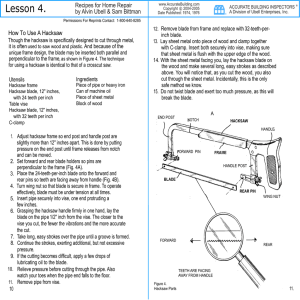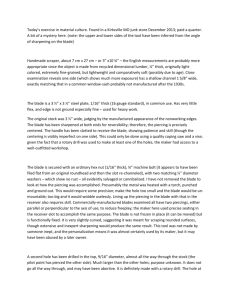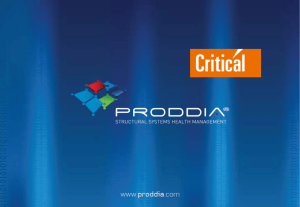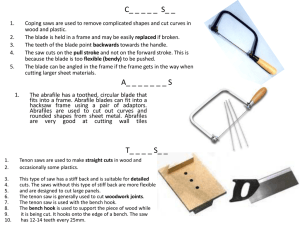IB Lab - 05 Hacksaw blade oscillation
advertisement
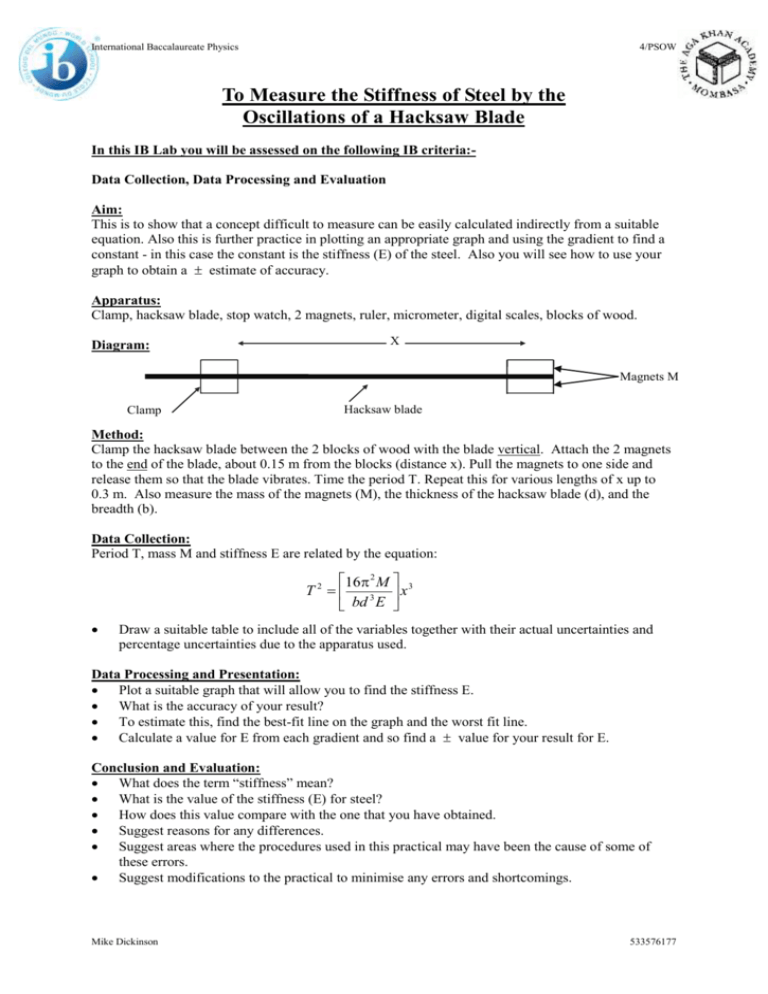
International Baccalaureate Physics 4/PSOW To Measure the Stiffness of Steel by the Oscillations of a Hacksaw Blade In this IB Lab you will be assessed on the following IB criteria:Data Collection, Data Processing and Evaluation Aim: This is to show that a concept difficult to measure can be easily calculated indirectly from a suitable equation. Also this is further practice in plotting an appropriate graph and using the gradient to find a constant - in this case the constant is the stiffness (E) of the steel. Also you will see how to use your graph to obtain a estimate of accuracy. Apparatus: Clamp, hacksaw blade, stop watch, 2 magnets, ruler, micrometer, digital scales, blocks of wood. X Diagram: Magnets M Hacksaw blade Clamp Method: Clamp the hacksaw blade between the 2 blocks of wood with the blade vertical. Attach the 2 magnets to the end of the blade, about 0.15 m from the blocks (distance x). Pull the magnets to one side and release them so that the blade vibrates. Time the period T. Repeat this for various lengths of x up to 0.3 m. Also measure the mass of the magnets (M), the thickness of the hacksaw blade (d), and the breadth (b). Data Collection: Period T, mass M and stiffness E are related by the equation: 16 2 M 3 T x 3 bd E 2 Draw a suitable table to include all of the variables together with their actual uncertainties and percentage uncertainties due to the apparatus used. Data Processing and Presentation: Plot a suitable graph that will allow you to find the stiffness E. What is the accuracy of your result? To estimate this, find the best-fit line on the graph and the worst fit line. Calculate a value for E from each gradient and so find a value for your result for E. Conclusion and Evaluation: What does the term “stiffness” mean? What is the value of the stiffness (E) for steel? How does this value compare with the one that you have obtained. Suggest reasons for any differences. Suggest areas where the procedures used in this practical may have been the cause of some of these errors. Suggest modifications to the practical to minimise any errors and shortcomings. Mike Dickinson 533576177

